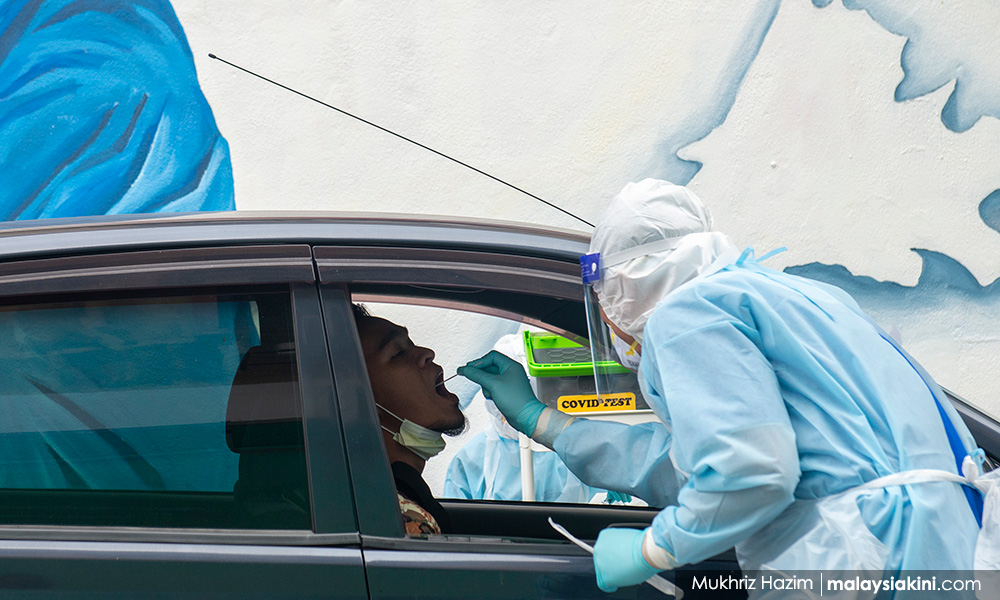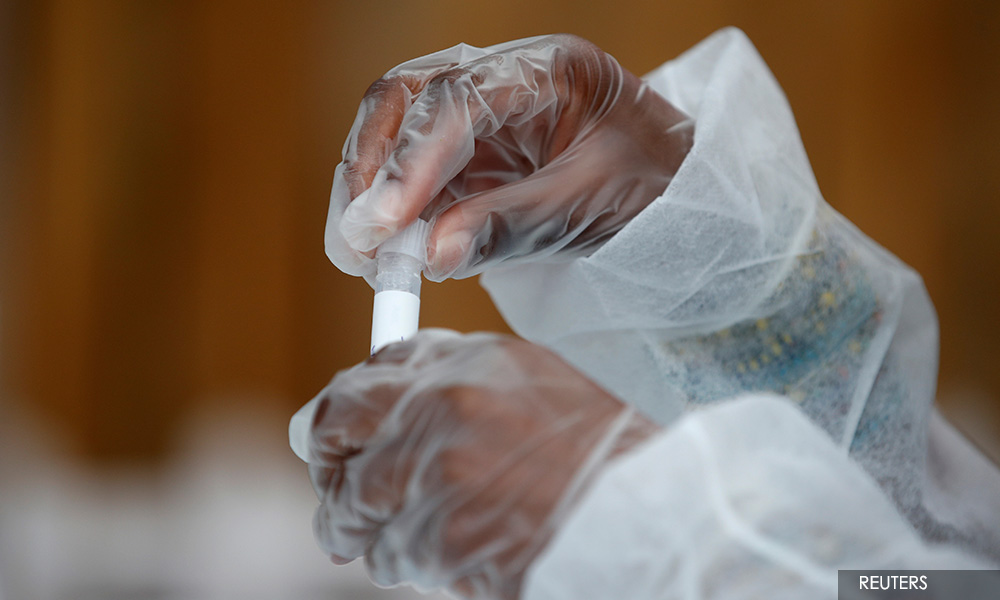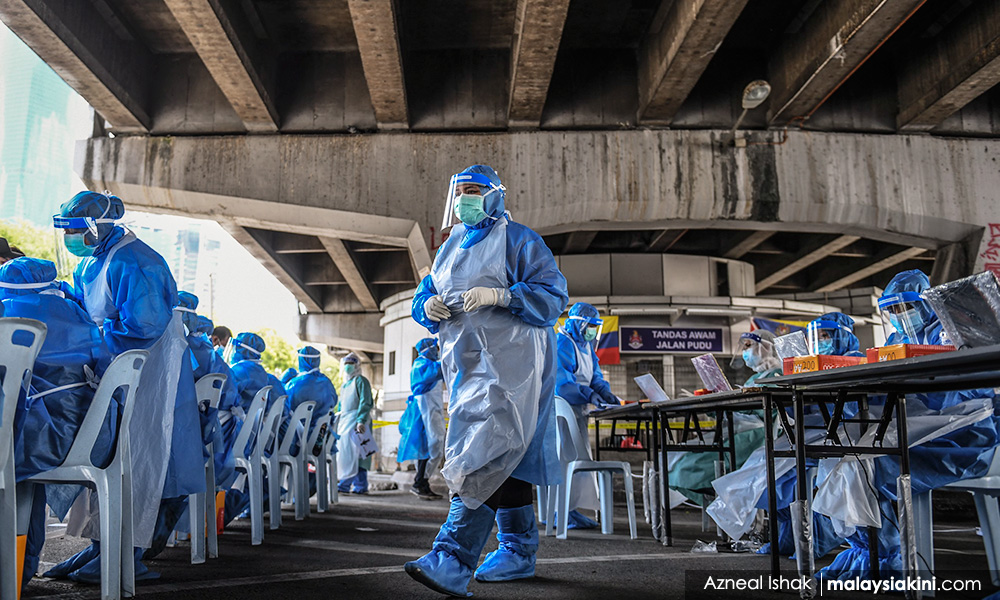COMMENT | I think the Health Ministry needs to stop making wild predictions of flattening the curve and on the weeks of the movement control order (MCO) it would require to achieve so. It has fallen short on several occasions since the onset of the third wave. And it is most unfortunate that the blame is more often than not heaped on the rakyat as failing to comply with the SOPs.
To begin with, for posterity's sake, the ministry was gung ho about being fully prepared for come what may in the Sabah elections. It was the very failure of the ministry to uphold the SOPs that the third deadly wave was unleashed in Sabah with the spillover into Semenanjung and which they have been unable to mitigate since despite their earlier assertion that the conditional MCO was the best way to reduce R nought.
And true to the idiom, the devil’s in the details, the rakyat who are now mercilessly trapped with the #StayHome Emergency Ordinance, have every right to know the exact plans of the ministry to get them out of this mess which the government and ministry self-inflicted.
The key element in the blueprint of action to mitigate this Covid-19 national emergency must surely be a well-executed 'Find, Test, Trace, Isolate and Support' (FTTIS) system recommended by the WHO which has fallen terribly short in its national implementation.
Until and unless this back to basics of population infection control is efficiently and effectively operationalised, the nation will continue to relapse into a vicious cycle of unending MCOs.
The FTTIS system finds and tests hotspots of Covid-19 outbreaks. Rapid isolation of cases and quarantine of close contacts through tracing is extremely critical. Isolation will only work if the rakyat, especially the B40, receive support during the MCO period with food security and financial aid.

The government through its relevant ministries and agencies must provide this social security net and support for this new policy of home isolation to ensure its success. Otherwise, the rakyat will fail to comply with home isolation, in order to search for and put food on the table and scour for basic home essentials. The government already has in place low-risk isolation centres for households who are unable to effectively isolate at home.
Clinical support is also vital for monitoring the health of cases and contacts who are undergoing home isolation in the community.
Data on the following key performance indicators (KPI) can reassure the rakyat that the FTTIS system in place is capable of detecting and isolating suspected cases and contacts within 48 hours.
1. What percentage of tests results are returned within 24 hours?
2. What percentage of positive cases are informed within 24 hours?
3. What percentage of people with a positive test have been successfully contacted within 24 hours to find their contacts?
4. What percentage of named contacts are contacted within the next 24 hours?
5. What percentage of contacts comply with isolation?
6. What percentage of cases/contacts in isolation/quarantine require/request support and receive it?
7. If a symptomatic person has a negative test, but the symptoms persist, how quickly can they get another test?
A most recent circular from the Health Ministry dated yesterday Surat Pekeliling Ketua Pengarah Malaysia Bil. 2/2021 at para 4.3 notes:
'4.3 Bilangan sampel yang diambil adalah bergantung saiz kohort iaitu bilangan keseluruhan individu yang terdedah dalam kluster tersebut:
a) sekiaranya kurang dari 50 orang, memadai diambil 20 sampel; dan
b) sekiranya melebehi 50 orang, memadai 30 sampel atau 10% mengikut mana yang rendah.'
We fail to understand the rationale of this reduced testing strategy. We should be ramping up testing to achieve a positive rate of less than the WHO 5% benchmark of pandemic control. As at Jan 12, our positive rate was 8.2%.

Imagine if you only screened 10% of the cluster, and all returned as negative whilst the positive cases were all in the 90% you failed to screen - this would be totally disastrous. This new strategy is against good public health science and is against all norms of targeted mass screening.
Besides, the ministry must remove its thinking from absolute numbers and shift to incidence rates which is a basic public health metric. This mindset and strategy of 'Do Less-Test Less Less Positives-Less Daily Cases' is the very antithesis of a holistic FTTSI programme and must be rectified.
Granular data on the success (or otherwise) of each component of the FTTIS should be shared, in real time, with all key stakeholders in order to support decision making and response at both the national and state level.
Digital applications, leveraging on data science and machine learning will most certainly enhance the process of contact tracing.
Since super-spreader events and persons are a major cause of Covid-19 transmissions (80% of all infections arise from just 20% of those infected), backward contact tracing should be combined with standard forward contact tracing to achieve optimal effectiveness.
Rapid and seamless integration between MySejahtera and Selangkah datasets is essential to provide high-quality information to the community to build trust and engagement, whilst complying with the Personal Data Protection Act 2010.
These two apps should be further developed to support people to adhere to isolation and enable them to report symptoms daily and receive appropriate treatment and medical intervention should their condition deteriorate.
Strategic risk communications are vital to helping the rakyat to understand the purpose of the FTTIS. Apart from information to assess infection risk following proximity to an index case, recognise early signs and symptoms, they should be directed as to the when, how and where to get tested, and how to obtain financial and social support, and request for transfer to a low-risk isolation centre if isolation at home is inappropriate.
With the imminent availability of Covid-19 vaccines, apart from wide scale awareness programmes to inform and empower the rakyat of the benefits and safety of being immunised, counter fake vaccine news, the appropriate logistics should be put into place to facilitate mass immunisation.

The FTTIS strategy could be utilised to spearhead the immunisation programme, FTTIS Immunisation, as a holistic package of healthcare services to flatten the epidemic curve and a return to near-normalcy.
The Health Ministry is the implementer of the re-strategized FTTISI blueprint of action. There is a dire need of a national task force as a system of oversight to ensure that every aspect of the hexavalent system is working synchronously, efficiently and effectively during the period of the MCO and post-MCO towards virtually zero Covid-19 or a baseline endemicity which is acceptable for peaceful co-existence with the coronavirus.
The task force must be empowered with the authority to continually evaluate the FTTISI programme ensure that the KPIs are met and if the deliverables are not forthcoming, to troubleshoot the problems and provide the pertinent solutions. They should be accountable directly to the cabinet and the prime minister, unlike the present internal audit of the Health Ministry by the Health Ministry which has not served the nation well.
National lockdowns and emergency ordinances are blunt tools of pandemic management. They are imprecise and damaging tools used only as a final resort to prevent surges of infections in order to protect the healthcare capacity. They severely disrupt virtually all aspects of our human existence, physical, mental, socio-political and economical. In the second quarter of 2020, the nation’s GDP plunged by 17.1% (the worst in our history) consequent upon the national MCO to contain the COVID-19 pandemic.
The FTTISI strategy is only fully effective if it is able to isolate the maximum numbers of Covid-19 cases and their contacts from the wider community. The three critical success factors are namely:
1. Leadership of the national pandemic management plan that is competent and transparent which builds trust and ownership in the FTTISI programme.
2. Clarity of risk communication which informs and empowers the rakyat as to the importance of FTTISI and what they are expected to do.
3. Food security, financial and other social support so that rakyat can do what is being asked of them.
DR MUSA MOHD NORDIN is a paediatrician while ASST PROF MOHAMMAD FARHAN RUSLI is a public health physician.
The views expressed here are those of the author/contributor and do not necessarily represent the views of Malaysiakini.

